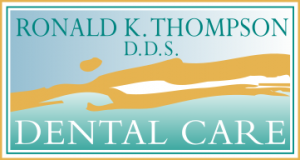Humans knew from the beginning that it was important to clean their teeth. The Ancient Egyptians are believed to have used a chewstick before toothbrushes. It was made of wood that was pointed and brittle on one side and then splintered on the other side (floss).
The game of dentistry changed in China during the Tang Dynasty (619-907 A.D.). The invention of the modern toothbrush is its precursor. It featured a bamboo or bone handle and bristles made of Siberian hog’s hair.
It is now possible to better take care of your teeth and eliminate bacteria that thrive in moist or dark environments. Gum disease can be prevented by flossing and brushing.
What are the different types of Gum Diseases?
Plaque and tartar are the results of microorganisms such as bacteria not being cleaned off your teeth. These microorganisms can build up and cause gum disease. Gingivitis can develop if this buildup isn’t addressed. This is the first stage of gum disease. Periodontitis, which is a more severe condition, could develop.
East Valley Dental sees patients with periodontitis and gingivitis almost every day. It is a common condition, but many people don’t know what each term means. Understanding the basics of each issue can help you prevent or treat problems with your gums and teeth.
Gingivitis is a condition where healthy gums start to bleed. Microorganisms below the surface cause swelling of the gums. Gingivitis can be difficult to spot. It may not cause any discomfort.
You may have bleeding gums or swelling. You want to know if your gums are bleeding or swelling. Easy Valley Dental is the best way to determine if you have any dental issues. This guide will give you an overview of all types of gum disease.
What is Gingivitis?
Gingivitis, one of the most common forms of dental problems, is a very serious condition. It can be treated and corrected. Gingivitis refers to inflammation of the gums. You may also experience other symptoms. Gingivitis can also be caused by other symptoms. Be aware of these signs so that you can prevent further damage.
Gingivitis Signs
When you brush your teeth, you can see if something is wrong. Gingivitis is a condition that causes gum inflammation.
Sometimes bleeding can occur when you floss or brush your teeth more often than usual. Gum inflammation can be a problem if it occurs often. Another sign that something is wrong with your gums is bleeding.
Gingivitis Treatment It
Simply improving your oral health can help to treat gingivitis. Regular brushing and flossing of your teeth is a good habit. If you are already flossing and still have difficulty, you may need to reexamine your technique and make sure you are using the right angles.
Regular dental check-ups are part of a regular oral hygiene routine. When was the last occasion you visited your dentist? If you have been away from your dentist for more than six months, it is time to schedule an appointment. Any problems can be detected before they become serious. Gingivitis can cause bleeding gums. An infection of the gums can cause bone loss and other serious health issues.
A dental hygienist performs professional dental cleaning. They use special tools to remove tartar and plaque. The dentist may prescribe antiseptic mouthwash. These simple steps can prevent gingivitis from becoming a more serious form of gum disease.
Periodontitis Explained
People who don’t know about gingivitis may ignore it or interpret it incorrectly. If left untreated, periodontitis develops. You will need to see a dentist in order to treat the problem.
Inflammation can cause inflammation of the periodontium. This is the most common type of periodontal disease. It is composed of the bone and gum tissue that bind your teeth. These areas can become pockets below your gum line if there is too much bad bacteria or plaque.
Progressively, aggressive periodontitis can develop in later stages. The problem can spread to other parts of the body once that happens. Although the immune system fights the infection, the problem can continue to spread if there is not good oral hygiene.
What should you know if you have periodontitis?
Periodontal problems worsen gradually and in stages. As plaque builds up, the severity of symptoms rises. Periodontitis can be more severe than scary at first. It presents with symptoms such as persistent bad breath and red gums. Both gum disease gingivitis and periodontitis can be reversed.
This condition can become apparent if your gums become sensitive or your overall health is affected. Poor alignment can be caused by loosing of teeth. Receding gums replace healthy gum tissue. Tooth loss can occur if the connective tissue doesn’t hold your tooth in place.
There are many other risk factors associated with chronic periodontitis. It is due to ongoing infections in your body. Gum disease can cause further damage that could prove fatal. Periodontal disease is something you should avoid, even if it’s advised.
Your body will fight off infections so it is important to visit your dentist and doctor frequently. Poor oral hygiene and periodontal disease can’t be fixed without treatment, especially if the patient is eating a poor diet. This can lead to loss of bone and gums, as well as health problems such as cardiovascular disease.
How do you manage periodontitis?
Gum disease at the advanced stage of periodontitis can be more difficult to manage. Gingivitis prevention is not an easy task. It will take time to get your teeth cleaned by a professional and to maintain good oral hygiene at home.
It is vital to take care of your oral health. Recessive gums are not the only problem. Gingivitis and periodontitis are two examples of infections. Your dentist will need to enter your mouth to clean the infection using antibiotics and root planing. The dentist uses instruments to reach under the soft tissues and remove any plaque or tartar that has accumulated on your gums. The gums can be reattached to your teeth by removing any excess gum.
Professional dental cleaning may not be enough in more severe cases. Plaque builds up and the gums collect particles. If your periodontal disease doesn’t improve with treatment, surgery may be the next step.
To access the root of the tooth, the dentist will need to open your gums. This is a treatment for gum disease. After the gum tissue has been restored and the roots cleaned, the next step is to clean the roots. It then attaches gradually to the tooth. Although the procedure is not very invasive, it can be avoided if you are able to prevent gum disease from developing and take good care of your teeth and gums.
Be aware of the warning signs for Gum Disease
Periodontal disease is not always caused by gingivitis. This type of advanced gum disease is responsible for most tooth loss. It is possible to avoid it entirely if you catch it early and do a thorough cleaning every so often.
Gingivitis, a mild form of gum disease, is easy to treat. It is important to treat it as soon as possible. It is easy to prevent periodontal disease and all its complications. It is important to maintain a good oral hygiene regimen. Easy Valley Dental is a great place to visit for regular checkups. We can prevent gum disease and other dental problems at the root.





